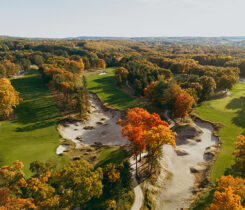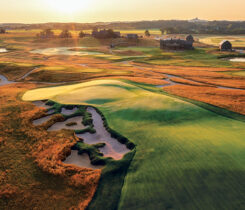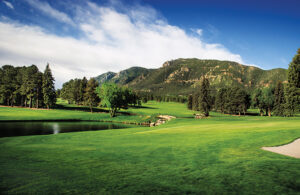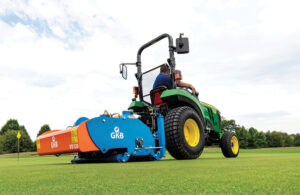Turf MD: Eclectic look at early spring
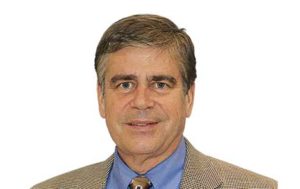
Photo: Karl Danneberger
Spring reminds me of the start of a sports car race. From a standing or slow speed start, the rapid or instantaneous increase in speed results in a frantic, dramatic, mismatch-looking scene of cars out of position.
Early spring when turfgrass growth is just starting looks much like the start of a race, a mess that quickly accelerates to high speed.
The result is that turfgrasses face a collection of physiological, pathological and climatological factors that express themselves in maladies. The turf tends to struggle along during this spring start until temperature and moisture become ideal at which the turf growth and health become more predictable. Below are just a few of the early spring issues that add drama.
The appearance of annual bluegrass (Poa annua) on creeping bentgrass turf, especially on greens, is one of the most striking signs of early spring. This can be especially disconcerting if the creeping bentgrass greens were “clean” the previous fall. Annual bluegrass germinates in the fall and often is not observed due to the existing turf cover. The appearance of annual bluegrass can be enhanced from winter golf play. Wear to the turf can result in thinner turf or gaps that can enhance annual bluegrass colonization.
If there is any good news, the annual bluegrass that has appeared and was not apparent in the fall will be mostly annual in nature and should disappear with the arrival of summertime temperatures.
Early spring is a time when color variation is evident. Although we and most golfers want the turf to be a uniform green color on the first real warm day of play, in many instances, this is not the case because of microconditions (soil temperature variation, shade, temperature) that can result in various stages of dormancy being broken. Outside of the normal color tones of dormancy, color variation is a sign of potential issues.
If the turf appears orange or even bright orange in early spring, basal anthracnose occurs on both annual bluegrass and creeping bentgrass at this time of the year. Basal anthracnose appearing in the early spring is often due to superintendents not getting complete control of the disease in the fall. Usually, the pathogen ends up overwintering in a significant amount to cause infection in late winter/early spring.
Purple patches are a common sight on creeping bentgrass. The purpling is a physiological response to warm sunny days followed by a rapid drop in temperature at sundown. The result: anthocyanin in the leaves is expressed. The purpling should disappear once warmer temperatures arrive later in the spring.
From an early spring perspective, is there nothing better to describe spring than crabgrass germination? In some instances, we use physiological events, specifically plant phenotypic keys, to time preemergent crabgrass herbicide treatments. The full bloom of the eastern redbud tree and forsythia bloom are often used to make preemergent crabgrass applications.
In the northern U.S., one of the most disturbing sights of early spring is the appearance of the annual bluegrass weevil. The annual bluegrass weevil continues to expand in both geography and severity. The presence of the adults occurs in early spring and requires immediate attention. Where other early spring maladies — either physiological, pathological or weather — tend to disappear as spring proceeds and summer arrives, the annual bluegrass weevil can continue to persist.
In the southern U.S., early spring is the time warm-season turfgrasses break dormancy. At about the same time, large patch is caused by the pathogen Rhizoctonia solani. Specifically, the strain for large patch that separates it from brown patch on cool-season turfgrasses is described as Rhizoctonia solani AG 2-2 (LP), while the pathogen for brown patch is Rhizoctonia solani AG 1-A.
Large patch attacks with varying degrees of severity on seashore paspalum, centipedegrass, zoysiagrass and St. Augustinegrass. Bermudagrass is the least susceptible of the warm-season turfgrass mentioned. Once temperatures rise into the 80s, large patch often disappears.
There is little doubt that early spring is an exciting time in the golf course world. It is the time for turfgrass rejuvenation and a new start to the year. However, with any new start, it is often bumpy









